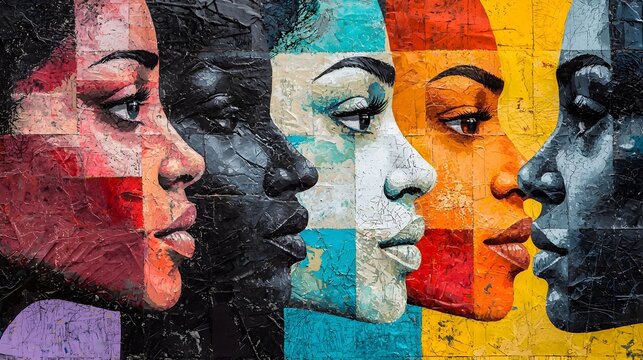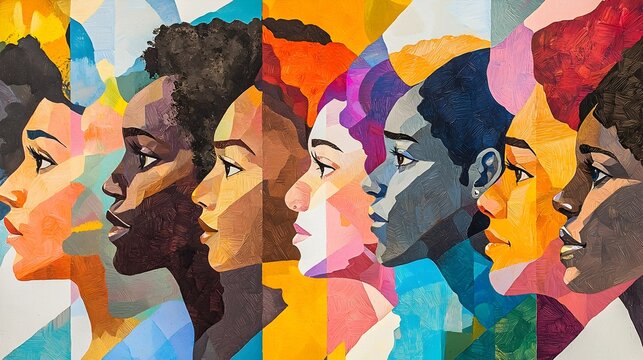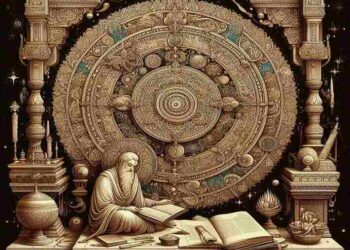Table of Contents
ToggleIntroduction
Exploring Intersectionality In Modern Literature The concept of intersectionality has grown in importance in conversations about identity, social justice, and the relationships between privilege and power in recent years. The term “intersectionality,” which was first used in 1989 by legal scholar Kimberlé Crenshaw, describes the nuanced ways in which different social identities—including race, gender, sexual orientation, class, ability, and more—interact to produce distinct experiences of privilege or oppression.
Although intersectionality was first introduced as a framework in the fields of sociology and law, it has since spread to many other fields, including literature.
Intersectionality is a lens through which readers and critics can examine how various facets of identity come together to influence both individual and collective experiences in the context of contemporary literature.
By highlighting the variety of elements that impact characters’ lives, authors who use intersectional themes in their writing expose the complex reality of underrepresented and oppressed communities. These pieces frequently highlight structural injustices and present a more complex understanding of identity, proving that oppression is complex and multidimensional.
Defining Intersectionality in Literature
Before diving into specific works and authors, it’s essential to understand how intersectionality functions within the realm of literature. At its core, intersectionality is about acknowledging that people’s identities cannot be reduced to one aspect or category. Instead, individuals embody multiple, interconnected identities that shape their experiences in unique ways. In literature, this means creating characters whose lives are informed not only by one defining characteristic—such as race or gender—but by the complex interplay between multiple factors.
Read More
For instance, a Black woman’s experience in a predominantly white society is influenced by both her racial identity and her gender. Similarly, the challenges faced by a queer immigrant from an economically disadvantaged background are shaped by a combination of their sexuality, nationality, and class.
Intersectional analysis in literature helps to uncover how these identities interact and how various systems of power—like racism, sexism, classism, and homophobia—are interconnected and contribute to an individual’s experiences of marginalization or empowerment.
When authors employ intersectionality, they often challenge stereotypical portrayals of identity by highlighting the multiplicity of experiences that shape a person’s life. Rather than simplifying characters into single-identity categories, they embrace the idea that each person is a combination of intersecting traits, each of which influences their interactions with the world. This approach encourages readers to think more critically about the complexity of identity and the social structures that shape it.
Intersectionality in Modern Fiction
1. The Underground Railroad by Colson Whitehead
One of the most prominent works that engages with intersectionality in recent literature is The Underground Railroad by Colson Whitehead. This Pulitzer Prize-winning novel reimagines the historical Underground Railroad, transforming it into an actual train system that helps enslaved people escape to freedom. The novel’s protagonist, Cora, is a young woman escaping slavery, and Whitehead’s portrayal of her journey intersects with various forms of oppression.
Cora’s experience is deeply shaped by her race, gender, and status as a woman in a patriarchal, racist society. Her struggles are compounded not just by the institution of slavery, but also by her gender, which makes her vulnerable to sexual violence and exploitation. The novel’s intersectional approach is particularly poignant in its exploration of how race and gender intersect to shape Cora’s life in ways that are different from the experiences of her male counterparts. Whitehead’s book is a powerful reminder that the historical experience of slavery cannot be understood solely through the lens of race but must also consider the ways in which gender, power, and identity intersect to create unique experiences of suffering and resistance.
Read More
2. Americanah by Chimamanda Ngozi Adichie
Chimamanda Ngozi Adichie’s Americanah explores the experiences of a Nigerian woman, Ifemelu, who moves to the United States for her education. Throughout the novel, Adichie weaves together themes of race, immigration, class, and identity. Ifemelu’s journey as an immigrant navigating the complexities of race in America is a key example of how intersectionality plays out in literature. Her experiences are informed not only by her race as a Black woman but also by her status as an immigrant from a developing country and her evolving sense of self as she adapts to life in a new cultural context.
Americanah underscores the different ways race is experienced in Nigeria versus the U.S., drawing attention to the complexities of belonging and identity in the diaspora. Ifemelu’s personal transformation, as well as her blog posts on race and identity, serve as a vehicle for Adichie to interrogate how race, class, and immigration intersect to influence an individual’s understanding of themselves and their place in the world. Adichie’s narrative examines how structural inequalities—such as the racial hierarchy in the United States—are compounded by other forms of identity and experience.

3. The Water Dancer by Ta-Nehisi Coates
In The Water Dancer, Ta-Nehisi Coates, best known for his work on race and history, crafts a powerful narrative that explores the intersections of slavery, memory, and identity. The protagonist, Hiram Walker, is born into slavery, and the novel delves into his struggle to reconcile his status as a Black man with his quest for freedom and self-determination. The book weaves together themes of historical trauma, personal agency, and familial bonds, demonstrating how identity is shaped by both inherited history and lived experience.
Coates’ novel focuses on the intersectionality of race and class, illustrating how social mobility is not just hindered by race but also by economic disadvantage. Hiram’s journey is not only one of personal liberation but also one of understanding the collective memory of Black people in America, and how their intersecting identities affect their ability to overcome systemic oppression. Through Hiram’s eyes, readers are invited to consider how personal and societal struggles are intertwined and how the historical trauma of slavery continues to reverberate across generations.
4. Queer and Feminist Intersectionality in The Argonauts by Maggie Nelson
Maggie Nelson’s memoir The Argonauts provides an intimate exploration of queer and feminist identity, using an intersectional lens to discuss gender, sexuality, and the fluidity of identity. Nelson’s narrative is both deeply personal and intellectually rigorous, examining her own experiences with gender identity, sexuality, and family life. Throughout the book, Nelson reflects on the intersections of her identity as a queer, feminist woman in a society that often tries to define individuals by rigid categories.
By addressing her relationship with her partner, who is transitioning, and her experience of becoming a mother, Nelson highlights the fluidity of gender and the complexity of living as a queer woman in a world that demands binary definitions of identity. The Argonauts challenges readers to think critically about the intersectionality of sexual identity, gender, and the body, and how personal narratives can provide valuable insights into the larger cultural discussions surrounding identity politics.
5. Girl, Woman, Other by Bernardine Evaristo
Bernardine Evaristo’s Girl, Woman, Other offers a stunning portrayal of the lives of twelve interconnected women of African descent in the UK. The novel spans more than a century, touching on themes of race, gender, sexuality, class, and political activism. Each chapter focuses on a different woman, creating a tapestry of intersecting identities and experiences that challenge traditional notions of what it means to be a woman, Black, or queer in Britain.
Evaristo’s work shines in its portrayal of the diversity of experiences within a single community, illustrating how various factors—such as education, social class, and sexual orientation—can inform one’s understanding of self. The women in Girl, Woman, Other navigate different struggles but share common themes of empowerment, resistance, and survival. The novel offers a rich exploration of intersectionality, demonstrating how individual experiences of oppression and joy are shaped by the interplay of multiple, overlapping identities.

Conclusion
Intersectionality has become a central framework for understanding and analyzing modern literature. By focusing on how various social identities intersect and interact, authors have been able to create complex, multifaceted characters who reflect the diversity of human experiences. These works highlight the importance of considering not just one aspect of identity—such as race, gender, or class—but how they come together to shape a person’s life and experiences.
As literature continues to evolve, intersectionality will remain a vital tool for authors who seek to explore the nuances of identity and power. By challenging traditional narratives and offering more inclusive and diverse portrayals of marginalized communities, these works create opportunities for readers to reflect on the interconnectedness of identity and the importance of empathy in understanding the lives of others.
In the coming years, it is likely that intersectionality will continue to be a driving force in literature, inspiring new voices and narratives that speak to the complexities of living in an increasingly diverse and interconnected world.
Read More
FAQ
1. What is intersectionality in literature?
Intersectionality in literature refers to the exploration of how various aspects of a character’s identity—such as race, gender, class, sexuality, and more—interact and intersect to shape their experiences. It challenges the notion that identity can be understood through a single lens and emphasizes the complexity of lived experiences.
2. Why is intersectionality important in modern literature?
Intersectionality is important because it allows for a more nuanced and realistic portrayal of characters’ lives. It helps to reveal how different forms of oppression—such as racism, sexism, homophobia, and classism—overlap and compound, providing a richer and more accurate understanding of societal dynamics.
3. How does intersectionality impact the representation of marginalized groups in literature?
Intersectionality broadens the representation of marginalized groups by acknowledging that their experiences are not monolithic. It highlights the diversity within these groups and explores how multiple factors—like race, gender, and class—affect their experiences of power and oppression.
4. Can you give examples of books that explore intersectionality?
Some notable books that explore intersectionality include The Underground Railroad by Colson Whitehead, Americanah by Chimamanda Ngozi Adichie, The Water Dancer by Ta-Nehisi Coates, The Argonauts by Maggie Nelson, and Girl, Woman, Other by Bernardine Evaristo. These works engage with multiple layers of identity, such as race, gender, sexuality, and class.
5. How can readers engage with intersectionality in literature?
Readers can engage with intersectionality by considering how different identities shape a character’s experiences and understanding the social systems that contribute to inequality. Reflecting on the intersectional dynamics in stories encourages critical thinking about the ways in which power, privilege, and oppression manifest in the world
















